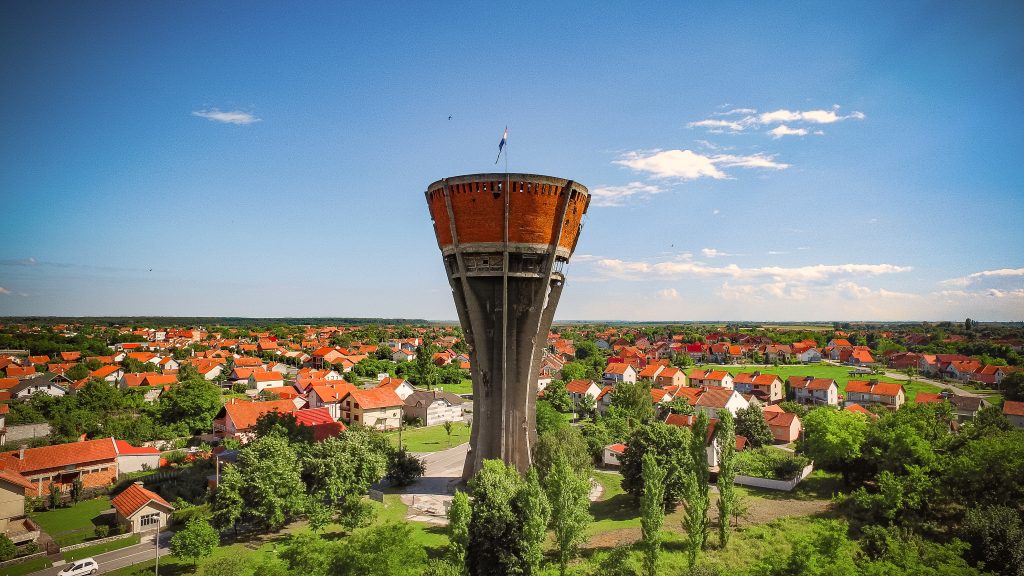Surprisingly, few people take the time to visit the region of Slavonia in Eastern Croatia. With close links to Hungary, Serbia, and Germany this flat rural agricultural land bordered by the River Drava, Sava, and the Danube has many places of interest.
There is a blossoming wine industry in Illok, the small but vibrant town of Osijek, the port town on the Danube of Vukovar, and the home of the Lipizzaner horses, Dakovo.
Sadly the region was considerably damaged during the Yugoslav war of the early nineties. Places like Vukovar are now attracting visitors interested in this history, however sad and shocking it may be!
The wetlands and nature of the region around Kopacki Rit are beautiful, and diverse, and attract walkers, hikers, bird spotters, and fishing enthusiasts from across Europe.
Slavonia is the forgotten corner of Croatia. As a result, I would thoroughly recommend a visit.
Osijek
The largest and most well-known city in Slavonia is its regional capital, Osijek. The city is also a port on the river Drava and is located just 25km from where it meets the Danube. The tourists who do stay here are seeking a quiet holiday. Yet they also want easy access to the nature of the lowland region of East Croatia. The area is a top location for river fishing.
The town itself is known for its Museum of Slavonia, its university, the zoo, and the Croatian National Theatre. The main square is called the Trg Ante Starcevica. As you walk the streets of the Upper Town, you will discover beautiful architecture while the former Tvrda fortress is now thriving with busy bars, restaurants, and a regional museum. The Trg Svetog Roka is the main promenade alongside the Drava River which has a beautiful pedestrian bridge that crosses the region of Baranja, Croatia.
As with so many Croatian cities, it hosts several popular events throughout the year. These include music festivals featuring the local “tamboura” music and cultural and entertainment events.

Dakovo
Dakovo is a small town in Slavonia. The most impressive feature is the Cathedral of St Peter. Alongside the cathedral is a museum dedicated to Bishop Josip Juraj Strossmayer who played a role in its construction. Close to the museum and cathedral is the Dakovo wine cellar known for its communion wines.
Founded in 1506, the town is also famous for the Lipizzaner Stud Farm Jubilee. The horses are a popular excursion for tourists, many of whom arrive on the riverboats cruising the Danube. Every year the horses take part in the Dakovacki Vezovi. This is a cultural event showcasing the region’s local crafts and embroidery.
Vukovar
For those who followed the Yugoslav war in the early ’90s the name of Vukovar will sadly always be associated with one of the biggest tragedies of the conflict. The battle of Vukovar back in 1991 was the turning point of the Croatia war for independence so the city is considered a symbol of resistance for the country.
Vukovar has a population of nearly 30,000 and is located in Slavonia at the border of Serbia. Other cities within reach by train or bus are Zagreb and Osijek in Croatia and Novi Sad in Serbia.
Today much of the city has been rebuilt and restored however there remains evidence from this darker past. There is Eltz Manor an 18th-century baroque palace that is one of those places to have been restored. The Vukovar City museum is worth a visit as is the little center of Vukovar with its cobbled streets and pretty baroque architecture. If you are strolling around the city then don’t miss the Franciscan monastery, the memorial to the lives lost in the war, or the walks along the river where you can stop for a coffee and to watch and take stock. Boat trips on the Danube are popular with visitors
Perhaps the most striking symbol of the city is the water tower which used to have a popular restaurant at the top however it was heavily destroyed during the war and is now seen as a symbol and a reminder to all of the war for independence. The Memorial Centre of Homeland War, the Vukovar Hospital, and other exhibitions provide more of this history.
Vukovar has a dark shadow from the not-too-distant past. It’s a part of Croatia that is very different from the sun-kissed beaches and islands of the Adriatic but it’s a part of Croatia’s story. It’s a city that makes you think – it makes you question but it also makes you hope that these events never happen again. Visitors should be sensitive and respectful of what happened here 30 years ago.

Kopacki Rit National Park, Slavonia
The Kopacki Rit Nature Park is an area of wetland plains between the Drava and Danube rivers. The Park is very popular for bird spotters and wildlife enthusiasts with visits ideally coordinated through local agencies based in Osijek or from your hotel.
A number of your most common birds are found here along with more rare breeds such as black stork, great white egrets, and the signature bird for the area, the white-tailed eagle. Plenty of wildlife frequents a large lake here which is connected to the Danube. In the north, there are dense forests that are home to mammals such as wildcats, deer, wild boar, and weasels.
Papuk Nature Park, Slavonia
Papuk Nature Park is Croatia’s first UNESCO Geopark. The area consists of wetland plains, farmlands, thick forests, waterfalls, and mountains and is popular for those who love nature, wildlife, and outdoor activities.
At the heart is the Papuk Mountain, the highest mountain in Slavonia. The Jankovac Forest Park is an area that is particularly well preserved due to its population of mammals and birds and there are plenty of trails you can follow to enjoy nature at its very best. There are also the Sekulinacke mountains and Rupnica both in the Vocin area of the park offering again wild forest and nature.
For history, the citadel of Ruzica is located near the town of Orahovica which also boasts examples of local Gothic and Renaissance castle architecture. Other places of historical interest are Velicki Grad, Drenovac, and Kamenski Vucjak.
There is a small charge to access the park of about 3 euros and if you want a guide then you are looking at about 250 kunas for a 4-hour excursion.
Camping and lodges are a great way to stay at the Papuk Nature Park and all are located right at the edge of the park so ideal for access to all the walking, hiking, and biking trails that are available to visitors. There are a small number of simple hotels a little further away from the park.

Contact Information
For further information on taking a trip to any part of Croatia, contact your local travel agent, a specialist tour operator, or the Croatia National Tourist Board.







